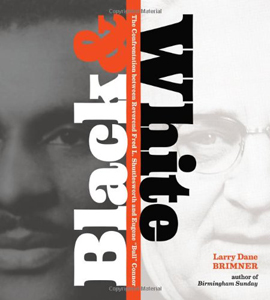
Welcome to the Horn Book's Family Reading blog, a place devoted to offering children's book recommendations and advice about the whats and whens and whos and hows of sharing books in the home. Find us on Twitter @HornBook and on Facebook at Facebook.com/TheHornBook
Race relations
Two works of nonfiction about the struggle over civil rights in the South and one historical-fiction graphic novel set at the turn of the previous century offer middle school readers context on race in this country.
 Rick Bowers’s 2010 book Spies of Mississippi: The True Story of the Spy Network That Tried to Destroy the Civil Rights Movement is an intriguing look at how the supporters of segregation — in the form of the Mississippi State Sovereignty Commission — gained and enforced their considerable power. Chronologically ordered, the volume climaxes with James Meredith's enrollment in the University of Mississippi in 1962, a story Bowers tells with journalistic immediacy. Appended documents from the actual commission allow the evidence to speak for itself. (12 years and up)
Rick Bowers’s 2010 book Spies of Mississippi: The True Story of the Spy Network That Tried to Destroy the Civil Rights Movement is an intriguing look at how the supporters of segregation — in the form of the Mississippi State Sovereignty Commission — gained and enforced their considerable power. Chronologically ordered, the volume climaxes with James Meredith's enrollment in the University of Mississippi in 1962, a story Bowers tells with journalistic immediacy. Appended documents from the actual commission allow the evidence to speak for itself. (12 years and up) Black & White: The Confrontation Between Reverend Fred L. Shuttlesworth and Eugene “Bull” Connor by Larry Dane Brimner (a 2012 Sibert Award honor book) looks at 1950s and 1960s Birmingham, Alabama, a city that earned its nickname “Bombingham.” At the heart of the violence were the often bloody confrontations between the forces of K.K.K. target Reverend Shuttlesworth and segregationist Commissioner of Public Safety Eugene Connor. Brimner’s well-researched text relies on a variety of primary-source documents, including FBI files and oral histories, to chronicle events. The many well-captioned photos and pull-quotes enhance the presentation. (12 years and up)
Black & White: The Confrontation Between Reverend Fred L. Shuttlesworth and Eugene “Bull” Connor by Larry Dane Brimner (a 2012 Sibert Award honor book) looks at 1950s and 1960s Birmingham, Alabama, a city that earned its nickname “Bombingham.” At the heart of the violence were the often bloody confrontations between the forces of K.K.K. target Reverend Shuttlesworth and segregationist Commissioner of Public Safety Eugene Connor. Brimner’s well-researched text relies on a variety of primary-source documents, including FBI files and oral histories, to chronicle events. The many well-captioned photos and pull-quotes enhance the presentation. (12 years and up) Comics and race take center stage in Best Shot in the West: The Adventures of Nat Love, a graphic novel by Patricia C. McKissack and Fredrick L. McKissack Jr. Nat Love, a contemporary of Billy the Kid, was born a slave in 1854 Tennessee and eventually gained his freedom. An expert in breaking any horse, Nat won acceptance as a cowboy and mastered sharpshooting, driving, and roping. While the fictional story uses maps, letters, and longer stretches of prose, the book knows when to rely on Randy DuBurke’s vivid, well-paced color illustrations to move the story forward. (10 years and up)
Comics and race take center stage in Best Shot in the West: The Adventures of Nat Love, a graphic novel by Patricia C. McKissack and Fredrick L. McKissack Jr. Nat Love, a contemporary of Billy the Kid, was born a slave in 1854 Tennessee and eventually gained his freedom. An expert in breaking any horse, Nat won acceptance as a cowboy and mastered sharpshooting, driving, and roping. While the fictional story uses maps, letters, and longer stretches of prose, the book knows when to rely on Randy DuBurke’s vivid, well-paced color illustrations to move the story forward. (10 years and up)
says
Add Comment :-
RELATED
RECOMMENDED
ALREADY A SUBSCRIBER? LOG IN
We are currently offering this content for free. Sign up now to activate your personal profile, where you can save articles for future viewing.







